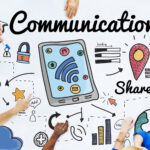The Day My Voice Found Its Power: My Unforgettable Presentation Skills Course Journey
Have you ever felt that familiar knot in your stomach just thinking about standing up and speaking in front of people? That cold sweat, the racing heart, the sudden urge to become invisible? Believe me, I know that feeling all too well. For years, public speaking was my personal Everest – a daunting, unconquerable peak that filled me with dread. But then, something shifted. I decided to stop running and finally face it, head-on. And that’s how I found myself signing up for a Presentation Skills Course.
This isn’t just a story about learning to talk better; it’s about finding my voice, boosting my confidence, and discovering that making a connection with an audience isn’t a superpower – it’s a skill you can learn. If you’ve ever felt like I did, then pull up a chair, because I’m going to tell you all about my journey.
Why I Finally Said "Enough is Enough"
For a long time, I managed to dodge presentations. I’d offer to do the research, create the slides, or even make the coffee, anything to avoid being the one at the podium. But as my career grew, these opportunities (or rather, necessities) became more frequent. I saw colleagues confidently sharing their ideas, influencing decisions, and just generally shining. Meanwhile, I was shrinking into my seat, my brilliant ideas staying locked inside my head, too afraid to come out.
I remember one particularly embarrassing moment. I was asked to give a quick update in a team meeting. My voice cracked, my hands shook, and I forgot half of what I wanted to say. I mumbled through it, ending with a sigh of relief as I sat down, feeling utterly defeated. That was the tipping point. I thought, "This can’t be my story forever. I need to figure this out."
That’s when I started looking for a Presentation Skills Course. I wasn’t just looking for tips; I was looking for a complete overhaul of my approach to public speaking.
Stepping Into the Unknown: What to Expect from a Presentation Skills Course
Walking into that first session, my anxiety was through the roof. I expected a room full of naturally confident speakers who just wanted to polish their already impressive abilities. To my surprise, the room was filled with people just like me – a little nervous, a little hopeful, and all eager to learn.
Our trainer, Sarah, was fantastic. She didn’t start by making us give impromptu speeches (thank goodness!). Instead, she created a safe, welcoming space where it was okay to be vulnerable, to make mistakes, and to learn from them.
It Wasn’t Just About Talking Louder
Before the course, I thought presentation skills were mostly about having a loud voice and a fancy slide deck. Oh, how wrong I was! Sarah quickly showed us that it’s a deep craft, involving many layers. It’s about how you connect, how you structure your thoughts, and how you deliver your message so it actually sticks with your audience.
The Trainer: A Guide, Not a Judge
One of the biggest fears I had was being judged. But Sarah was more of a coach and a guide. She watched us, gave gentle, constructive feedback, and always encouraged us to try again. She reminded us that everyone starts somewhere, and improvement is a journey, not a single leap. This supportive environment was crucial for someone as nervous as I was.
Unpacking the Toolkit: The Core Learnings from My Presentation Skills Training
Over the next few weeks, the course slowly but surely started to chip away at my fears and build up my capabilities. Here are some of the game-changing things I learned:
1. Structure is King: The Power of a Clear Roadmap
I used to just dump all my information onto slides and hope for the best. Sarah taught us the importance of a clear structure:
- Hook: Start with something that grabs attention. A story, a question, a surprising fact.
- Main Points: Stick to 3-5 key ideas. Any more, and your audience will get lost.
- Evidence/Examples: Back up your points with real-world examples or data.
- Call to Action/Summary: What do you want your audience to do or remember?
This simple framework was a revelation. It made my presentations easier to create and, more importantly, much easier for my audience to follow.
2. Beyond the Script: Delivery Matters
This was where I spent a lot of time practicing. It wasn’t about memorizing a script word-for-word, but about understanding the message so deeply that I could speak naturally.
- Body Language: I learned how to stand confidently, use gestures to emphasize points, and avoid nervous habits like fidgeting. Sarah taught us to "own the stage," even if it was just a small meeting room.
- Eye Contact: Instead of staring at my notes or a single spot on the wall, I learned to make genuine eye contact with different people in the audience, making them feel included.
- Voice Modulation: My voice used to be a monotone mumble. I learned to vary my pitch, pace, and volume to keep people engaged and to highlight important information. Pauses became my secret weapon!
3. Visuals That Speak Volumes (Not Just Bullet Points)
My old slides were notorious for being text-heavy. The course taught me that visuals should support your message, not be your message. We learned about:
- Minimalist Design: Less is often more.
- Powerful Images: Using high-quality, relevant images to evoke emotion and understanding.
- Data Visualization: Turning boring numbers into compelling charts and graphs that tell a story.
It transformed my slides from distracting walls of text into powerful visual aids.
4. The Art of Storytelling: Engaging Hearts, Not Just Minds
This was perhaps the most impactful lesson. Sarah explained that people remember stories far more than facts and figures. We practiced weaving personal anecdotes, case studies, and relatable scenarios into our presentations. This made my content not just informative, but also engaging and memorable. It felt less like a lecture and more like a conversation.
5. Handling the Hot Seat: Q&A Confidence
The Q&A session used to be my ultimate nightmare. I feared tricky questions or moments of silence. The course gave me strategies:
- Anticipate Questions: Think about what people might ask beforehand.
- Listen Actively: Truly hear the question before rushing to answer.
- Be Concise: Answer directly and avoid rambling.
- It’s Okay Not to Know: If you don’t have the answer, it’s fine to say you’ll look into it and get back to them. Honesty builds trust.
6. Practice, Practice, Practice (in a Safe Space)
We did a lot of practice presentations, both individually and in small groups. We recorded ourselves, watched the playback (cringeworthy at first, but incredibly helpful!), and received feedback. This repeated exposure in a low-stakes environment slowly built my confidence. Each time I spoke, it felt a little less scary.
The "Aha!" Moments and Little Victories
I remember one particular moment. It was my turn to present a short story we’d crafted. Usually, my hands would be clammy, and my voice would be shaky. But this time, something was different. I focused on Sarah’s advice: find friendly faces, make eye contact, breathe. As I spoke, I noticed people nodding, even smiling. I finished, and for the first time, I didn’t feel relief; I felt a spark of pride. I had connected. It wasn’t perfect, but it was me, finally communicating effectively.
My biggest breakthrough came when I realized that it’s okay to be imperfect. The goal isn’t to be a flawless robot, but to be an authentic human being sharing something valuable. That realization took so much pressure off.
Beyond the Classroom: Applying My New Skills
Armed with my new toolkit, I started actively seeking opportunities to speak. The first presentation I gave after the course was for a small internal project update. I applied everything I learned: a strong opening, clear structure, engaging visuals, and confident delivery. The feedback was amazing! People praised my clarity and confidence. It was a huge validation.
Since then, my presentations have gone from dreaded chores to enjoyable challenges. I’ve presented to larger groups, led workshops, and even found myself volunteering for speaking opportunities. My ideas are finally getting the airtime they deserve, and I’m genuinely enjoying the process of sharing them.
Who Should Consider a Presentation Skills Course?
If you’ve read this far, chances are you’ve felt some of what I felt. And let me tell you, a Presentation Skills Course isn’t just for aspiring TED Talk speakers or CEOs. It’s for anyone who:
- Feels nervous or anxious about speaking in front of others.
- Wants to communicate their ideas more clearly and persuasively.
- Needs to give presentations for work, school, or community groups.
- Struggles to engage an audience or keep their attention.
- Desires to boost their overall confidence in professional and personal settings.
- Wants to overcome the fear of public speaking once and for all.
It’s an investment in yourself, your career, and your ability to connect with the world around you.
My Voice, My Confidence, My Future
Looking back, taking that Presentation Skills Course was one of the best decisions I’ve ever made. It didn’t just teach me how to give a good presentation; it taught me how to believe in my own voice. It transformed a source of deep anxiety into a source of genuine excitement.
If you’re reading this and feeling that familiar knot in your stomach, know this: you’re not alone, and you don’t have to stay there. There are tools, techniques, and supportive environments designed to help you. Take that leap. Find a good Presentation Skills Course. You might just surprise yourself with the power your voice truly holds. I certainly did.



